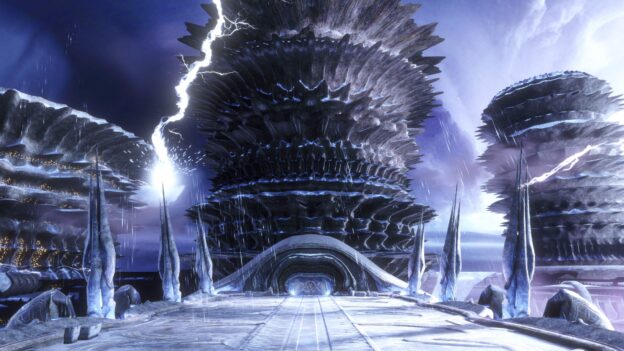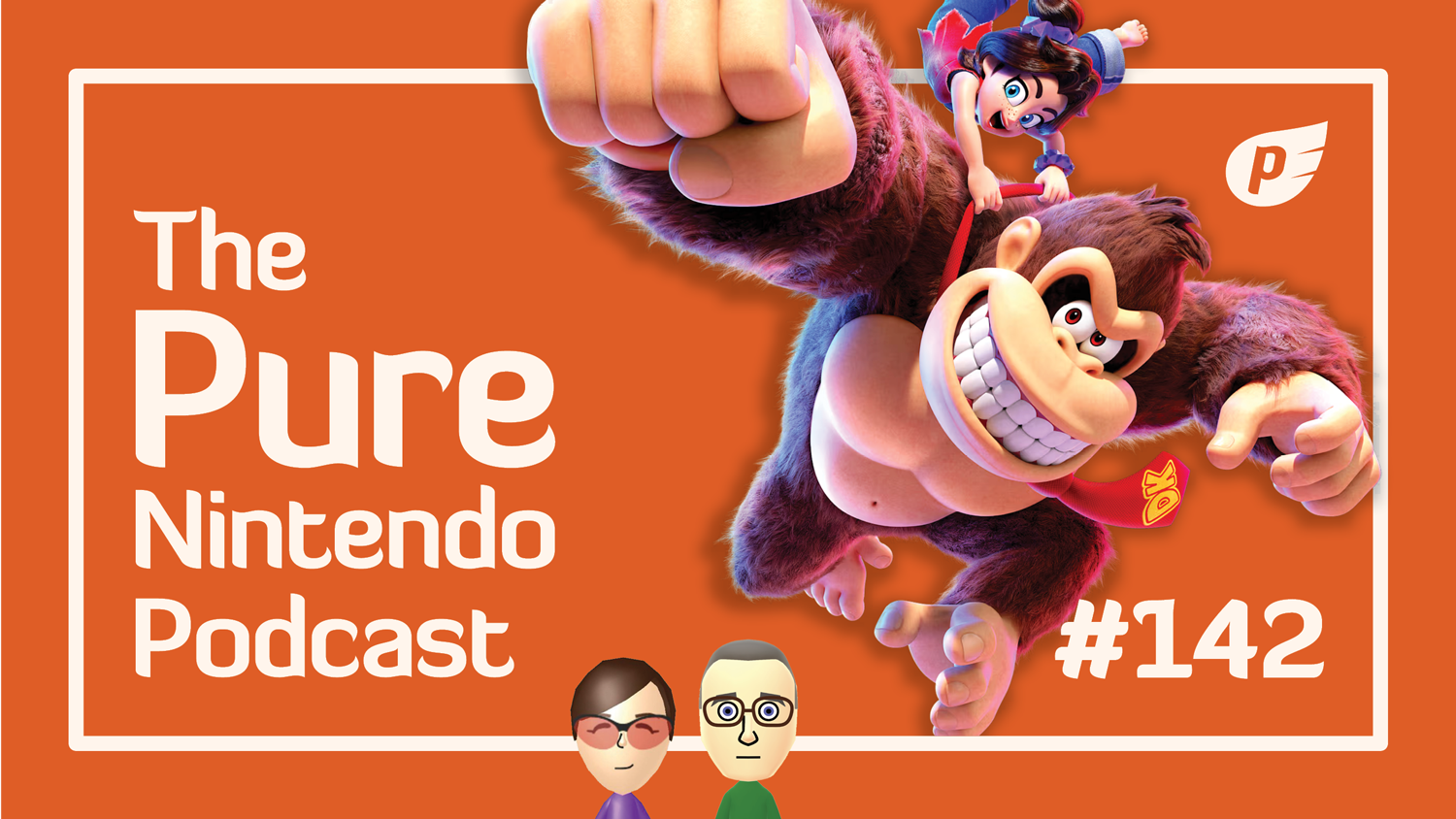Capcom Fighting Collection 2 Review – Review

Another round of Capcom classics, including curiosities we didn’t ask for.
I’ve come to really appreciate Capcom’s continued drum beat of fighting game compilations. The original Capcom Fighting Collection was a little Darkstalkers-heavy for my tastes but had a good mix of fighters I’d never seen before (and Puzzle Fighters!). Marvel vs. Capcom Fighting Collection was a dream lineage of their vs. series and was the face that launched a thousand “Gonna take you for a ride” jokes. Capcom Fighting Collection 2 has landed this year with one of its most eclectic mix of titles yet, with some titles that have a cult following and a series I’d missed out on and have been hungry to experience. In my preview I detailed some of the games’ mechanics, but with more time I’ve come to appreciate the package in full.
Capcom Fighting Collection comes with the following titles:
· Plasma Sword: Nightmare of Bilstein (1998)
· Power Stone (1999)
· Power Stone 2 (2000)
· Capcom vs. SNK: Millennium Fight 2000 Pro (2000)
· Project Justice (2000)
· Street Fighter Alpha 3 Upper (2001)
· Capcom vs. SNK 2: Mark of the Millennium 2001 (well, 2001)
· Capcom Fighting Evolution (2004)
Plasma Sword: Nightmare of Bilstein is the runt of the litter. It’s an early 3D fighter with a limited button set – two weapon attacks, kick, and a button to sidestep. There is a special attack meter that, much like Street Fighter, has a three-level gauge that can unleash powerful chain attacks when landed on an opponent. The bones are here for a solid fighter, but it has one key problem – actual moving in the game feels awful. It’s sluggish in movement, with a strange wind-up from button input to action that goes against a fundamental truth in fighters – call and response needs to be immediate, and you must feel like you’re in control of the action.

Power Stone is kind of like the PlayStation 1 arena fighter Ehrgeiz if it wasn’t going through its pre-teen “it’s not a phase” phase (that said, God Bless the Ring). You’re set in a small 3D space with an isometric camera angle in a match to the death. The ground is absolutely littered with destructible items that can be thrown at opponents, weapons, and most importantly, gems. If you collect three gems, the character transforms into a temporary superpowered being with new devastating attacks that can absolutely melt an opponent’s life bar. You can knock gems out of characters by pummeling them enough times, which feels reminiscent of something like the Smash Ball in Super Smash Bros. It makes for a good balance of offense and defense that’s needed to succeed. Movement can be a little sluggish, but not as bad as Plasma Sword thanks to a higher movement speed. The litany of items at your disposal keeps it from feeling punitive. It makes for a skill-based game with random elements that keep it fresh.
If Power Stone is a serious attempt at competitive 3D action, then Power Stone 2 is a party. Gone is the 1v1, replaced with a four-character battle royale. All the mess of floor items are still there, but the additional players make for a manic experience of racing for gems, figuring out who to focus attacks on, and not getting swept up in the calamity. You can get devastated in this game if caught in a corner with a flurry of attacks from all sides. On top of this, levels are a much more dynamic experience. Moving platforms or ships means having to navigate staying on the level along with the chaos. A favorite of mine was a level where partway through everyone is dumped into a scene straight out of Indiana Jones, with a giant boulder chasing you in a race to get to the door. Another great addition are boss battles. In a run you’ll encounter two bosses, one midway through and one at the end. These are large-scale events where one opponent joins you to take them down. For example, the midway boss is a mechanical lizard where you have to destroy their legs to incapacitate them and wail on them. Their attacks and phases aren’t difficult to figure out, but it’s a fun novelty that mixes things up compared to the original. I have no doubt this will be a fan favorite for online matchmaking.

The Capcom vs. SNK games are the big draw for me, so Capcom vs. SNK: Millennium Fight 2000 Pro was the first game I played. When starting you choose between Capcom or SNK style fighting. Having a lifetime of playing Street Fighters, I went straight to SNK style. While I didn’t see a noticeable difference in how the game looked between the two, one funny change is in the character select screen where the Capcom characters had been redrawn to fit the SNK style. It was fun to see how Ryu & Ken translated to this format, and there was a learning curve to acclimate myself to this style of fighter. This is a 2v2 matchup, but instead of tagging in characters at will you choose your two characters and decide the order pre-match. Beyond the standard button format, the super gauge meter must be charged by holding the medium punch & kick, causing the character to stand and charge like they’re from Dragonball. There’s something I love about this mechanic – it forces you to balance attack, defensive measures, and building up your power moves in a state of complete vulnerability which gives each match an extra layer of tension to contend with. The roster is expansive, but with more focus on their bigger franchises. The tempo is close to the Street Fighter Alpha series, with basic movement feeling grounded that can turn into fast-paced flying around the screen. One odd choice that nagged at me was the announcer, which is a boilerplate robot voice. The monotone speaking served as an anti-hype machine, but it’s a small quibble against an overall awesome game. The follow-up to Capcom vs. SNK, Capcom vs. SNK 2: Mark of the Millennium 2001 took that binary choice from the original and split it into several different styles to play from. For example one is the standard Street Fighter formula, another is standard SNK, but there are curveballs like the Street Fighter 3 parrying system that relies on split second forward motions to deflect attacks and receive zero damage from it. When selecting them, the game provides a few bits of information on what differentiates each. Beyond that, the game broadly hews to the same kind of battling format, but it’s this bespoke style approach that makes the addition feel like a meaningful addition to the collection.
I didn’t know anything about Project Justice, so it was a wholly new experience for me. It’s a 2D fighter with 3D modeled characters and looks closer to old Tekken or Virtua Fighter characters with heavily polygonal character design. Instead of separate character selections, you choose a team of three fighters and most battles have you choosing two of them to play with. Each team has their own individual story arcs, with a healthy helping of dialogue between characters that clearly know each other but which I have no history with. I like the idea of detailed storytelling in a fighter, but it felt like listening in on conversations that I had no context for. Structurally it’s like Capcom vs. SNK where there’s no tags, just choosing character order. The super moves include ones with a unique hook – a team-up attack. When choosing team-ups, your alternate character arrives on screen for 2-3 seconds to land an attack. If your opponent lands the attack first it counters the super move. It’s a fighter with a lot of neat ideas, but with a fatal flaw – it’s slow with delayed button input. I’m glad they packed this in, but it’ll be more a curiosity than something I come back to.

Street Fighter Alpha 3 Upper is one I don’t have a lot to speak to. The third prequel to Street Fighter 2 is the pinnacle of the trilogy with the biggest roster, cleanest drawn animation, a super move system that can materially affect your approach to combat, and it’s my personal favorite. According to Capcom, the Upper edition includes using the Japanese version of the game as its baseline, stage visual alterations, and Shin Akuma & Final M. Bison as selectable characters. It’s nice to have access to those characters outside the PlayStation 1 version, but I didn’t see a meaningful difference in the enhanced visuals. That said, this is the best arcade version of the game I’ve played and has the crispness and impact that other versions I’ve played didn’t retain.
Finally, Capcom Fighting Evolution is a potpourri of different fighting game characters that are thrown in the same pot but don’t quite meld together. Features four characters from Street Fighter 2, Street Fighter Alpha 3, Street Fighter 3: Third Strike, Darkstalkers, and Red Earth. I like the collection of characters, but the effort is copy-and-paste. Characters not only retain the original combat style from their games, but their character design and even their audio bits are lifted directly from their source material. The game is functionally sound as a fighter, but it’s because of the pieces all coming from foundationally strong games rather than being its own unique identity. It’s a fine game on its own but feels small compared to the much better Capcom vs. SNK series. It reminds me of the older vs. games from Marvel vs. Capcom Fighting Game collection – a precursor to much better things.
I’d be remiss not to mention the special features, but it matches what prior collections have to offer. An art gallery, music gallery, Japanese & English versions of each game, practice modes, quick save features, and online matchmaking with the ability to play are so important anymore that they should be seen as the industry standard, and Capcom should continue this good work. More broadly, Capcom Fighting Collection 2 is another mix of great hits, fun curiosities, and a few games that feel more like filling out a roster than anything. That said, Capcom vs. SNK and Power Stone are more than worth the price of entry alone, and fighting game fanatics will at least enjoy experiencing some oddities that they wouldn’t have otherwise.




